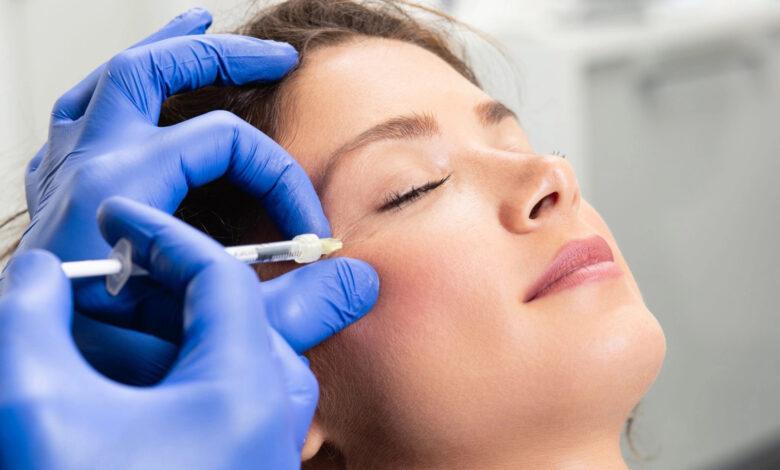
Contents
- 1 What is Botox and How Does It Work? A Complete Guide
- 2 Introduction: What is Botox?
- 3 History of Botox: From Poison to Medicine
- 4 Benefits of Botox: Why People Choose It
- 5 Risks of Botox: What to Watch Out For
- 6 Frequently Asked Questions About Botox
- 7 What is Botox: the result
- 8 People Who Are Curious About Botox
- 8.1 What is botox Turkey and how does it differ from botox dysport?
- 8.2 What is botox made of and what are its contraindications?
- 8.3 What is botox treatment for face and how does it differ from botox surgery?
- 8.4 What is botox in bootle and what are its benefits and risks?
- 8.5 What is botox effect and how can it be measured?
- 8.6 What is botox cosmetic and how is it different from other types of botox?
- 8.7 What is migraine botox and how does it work?
- 8.8 What are botox injection points and how are they determined?
- 8.9 What is drugs com botox and how is it different from botox cosmetic?
- 8.10 Is botox dangerous and what are the signs of a botox overdose?
- 8.11 How is botox used for sweating and what are the results?
- 8.12 What is botox used for and what are the alternatives to botox?
- 8.13 What happens when you stop botox and are there any withdrawal symptoms?
- 8.14 What are the best practices for getting botox injections and how can I prepare for them?
- 8.15
- 8.16 What is botox treatment for fair and how can it improve the skin tone and texture?
- 8.17 What is botox surgery and how is it performed?
- 8.18 How long does botox last and what are the factors that affect its duration?
- 8.19 What is botox made of and what are its contraindications?
- 8.20 What are the benefits and risks of botox for fair skin?
- 8.21 What is botox dysport and how does it compare to botox cosmetic?
- 8.22 What is botox injection and how is it different from botox surgery?
- 8.23 What exactly does botox do and is it good or bad for you?
- 8.24 What is botox Turkey and how can it help with facial wrinkles?
What is Botox and How Does It Work? A Complete Guide
Botox is a popular cosmetic treatment that can smooth wrinkles, reduce sweating, and even prevent migraines. But what is botox exactly, and how does it work? In this article, we will answer all your questions about botox, from its history and uses to its benefits and risks. Whether you are considering getting botox injections or just curious about this phenomenon, this article will provide you with everything you need to know.
Introduction: What is Botox?
Botox is the brand name of a medicine that contains a purified form of botulinum toxin, a protein that blocks nerve signals to muscles. By injecting botox into specific muscles, doctors can temporarily relax them and prevent them from contracting. This can have various effects, depending on the area and the purpose of the treatment.
The most common use of botox is to smooth facial wrinkles, such as frown lines, forehead lines, and crow’s feet. Botox works by relaxing the muscles that cause these wrinkles, making the skin look smoother and younger. Botox injections are quick, minimally invasive, and require no downtime. The results usually last for 3 to 4 months, and can be maintained with regular follow-up injections.
Botox can also be used to treat various medical conditions, such as:
- Neck spasms: Botox can relieve the pain and discomfort caused by cervical dystonia, a condition that makes the neck muscles contract involuntarily.
- Other muscle spasms: Botox can help people with cerebral palsy, stroke, or other neurological disorders that cause muscle stiffness or twitching in the limbs or eyes.
- Sweating: Botox can reduce excessive sweating (hyperhidrosis) by blocking the nerve signals that stimulate the sweat glands.
- Migraine: Botox can prevent chronic migraine headaches by relaxing the muscles and nerves that trigger them.
- Bladder problems: Botox can improve urinary incontinence and urgency caused by an overactive bladder or a neurological condition.
Botox injections are generally safe and effective when performed by a licensed and skilled health care provider. However, they can also cause some side effects and complications, such as:
- Bruising, swelling, or pain at the injection site
- Drooping eyelids, eyebrows, or mouth
- Dry eyes or mouth
- Headache or flu-like symptoms
- Difficulty swallowing, speaking, or breathing
- Allergic reaction or infection
- Spreading of the toxin to other parts of the body, causing muscle weakness, vision problems, or bladder issues
These side effects are usually mild and temporary, but they can be serious or even life-threatening in rare cases. Therefore, it is important to consult your health care provider before getting botox injections, and to follow their instructions carefully after the procedure.
History of Botox: From Poison to Medicine
Botox is derived from botulinum toxin, a substance produced by a bacterium called Clostridium botulinum. This bacterium can cause botulism, a severe form of food poisoning that can lead to paralysis and death. Botulinum toxin is one of the most potent toxins known to humans, and can be used as a biological weapon.
However, botulinum toxin also has a long history of medical use, dating back to the 19th century. In 1895, a German physician named Emile van Ermengem first identified the bacterium and the toxin after investigating a botulism outbreak caused by contaminated sausages. He named the bacterium Bacillus botulinus, which later became Clostridium botulinum.
In 1928, two scientists, P. Tessmer Snipe and Hermann Sommer, purified the toxin and discovered that it could block nerve impulses to muscles. They also found that different strains of the bacterium produced different types of toxins, which they labeled A, B, C, D, E, F, and G. Only types A and B are used for medical purposes today.
In the 1940s and 1950s, several researchers experimented with injecting small doses of botulinum toxin into animals and humans to treat various muscle disorders, such as strabismus (crossed eyes), blepharospasm (eyelid twitching), and torticollis (neck twisting). They observed that the toxin could temporarily relax the muscles and improve the symptoms.
In 1978, a Canadian ophthalmologist named Alan Scott obtained FDA approval to use botulinum toxin type A for treating strabismus and blepharospasm in humans. He named his product Oculinum, and later sold it to a pharmaceutical company called Allergan. In 1989, Allergan renamed the product Botox, and obtained FDA approval to market it for the same indications.
In 1992, two Canadian dermatologists, Jean Carruthers and Alastair Carruthers, noticed that their patients who received botox injections for blepharospasm also had fewer wrinkles around their eyes. They realized that botox could be used for cosmetic purposes, and published their findings in a medical journal. This sparked a huge interest in botox as a wrinkle treatment, and led to further research and development.
In 2002, the FDA approved botox for cosmetic use, specifically for treating moderate to severe frown lines between the eyebrows. Since then, botox has become the most popular cosmetic procedure in the world, with millions of people receiving it every year. Botox has also been approved for treating other facial wrinkles, such as forehead lines and crow’s feet, as well as various medical conditions, such as neck spasms, sweating, migraine, and bladder problems.
Benefits of Botox: Why People Choose It
Botox has many benefits that make it an attractive option for people who want to improve their appearance or health. Some of the main benefits of botox are:
- It is effective: Botox can significantly reduce wrinkles, smooth the skin, and enhance the facial features. It can also relieve muscle spasms, sweating, migraine, and bladder problems, and improve the quality of life of people who suffer from these conditions.
- It is fast: Botox injections take only a few minutes to perform, and the results are usually visible within a few days. The procedure does not require anesthesia, surgery, or recovery time, and the patients can resume their normal activities right away.
- It is temporary: Botox is not permanent, and its effects wear off gradually over time. This means that the patients can adjust the dose and frequency of their injections according to their preferences and needs. It also means that the patients can stop the treatment at any time, without any lasting consequences.
- It is safe: Botox has a long history of medical use, and has been extensively tested and regulated by the FDA and other authorities. When administered by a qualified and experienced health care provider, botox injections have a low risk of serious complications or adverse reactions.
Risks of Botox: What to Watch Out For
Botox is generally safe and well-tolerated, but it is not without risks. Some of the potential risks of botox are:
- Side effects: Botox can cause some mild and temporary side effects, such as bruising, swelling, pain, headache, or flu-like symptoms at the injection site. These side effects usually resolve within a few days or weeks, and can be managed with ice, painkillers, or eye drops.
- Unwanted results: Botox can sometimes cause unwanted results, such as drooping eyelids, eyebrows, or mouth, dry eyes or mouth, difficulty swallowing, speaking, or breathing, or an unnatural or frozen expression. These results are usually caused by injecting too much botox, injecting it into the wrong muscles, or spreading of the toxin to nearby areas. They can be prevented by choosing a reputable and skilled health care provider, and following their instructions carefully. They can also be corrected by adjusting the dose or waiting for the effects to wear off.
- Complications: Botox can sometimes cause serious or even life-threatening complications, such as allergic reaction, infection, or spreading of the toxin to distant parts of the body, causing muscle weakness, vision problems, or bladder issues. These complications are very rare, but they can be fatal if not treated promptly. They can be avoided by informing your health care provider of your medical history, allergies, and medications, and by seeking immediate medical attention if you experience any signs of distress, such as hives, rash, itching, swelling, difficulty breathing, chest pain, or loss of bladder control.
Frequently Asked Questions About Botox
Here are some of the most frequently asked questions about botox, and their answers:
How much does botox cost?
The cost of botox varies depending on the area and the purpose of the treatment, the amount and type of botox used, the skill and experience of the health care provider, and the location and reputation of the clinic. On average, botox injections cost between $200 and $600 per area, and between $800 and $1,200 per session. Some health insurance plans may cover part or all of the cost of botox injections for medical purposes, but not for cosmetic purposes. You should check with your health care provider and your insurance company before getting botox injections, and ask for a detailed estimate of the total cost.
How long does botox last?
the effects of botox usually last for 3 to 4 months, but they can vary depending on the individual, the area and the purpose of the treatment, the amount and type of botox used, and the frequency of the injections. There are also some factors that can affect how long botox lasts, such as your age, skin type, lifestyle, and metabolism. To prolong the effects of botox, it is advised to avoid sun exposure, smoking, alcohol, stress, exercise, and diet that can damage your skin, and to follow a healthy and balanced lifestyle.
You should also protect your skin from the sun, moisturize it regularly, and use gentle and non-irritating products. Additionally, you should avoid rubbing, massaging, or applying pressure to the treated areas, as this can cause the toxin to spread or dissipate faster. To maintain the effects of botox, it is recommended to get regular follow-up injections every 3 to 6 months, depending on the advice of your health care provider.
Some people may need more or less botox to achieve the desired results, and some may develop resistance or immunity to botox over time, requiring higher doses or more frequent injections. To maintain the effects of botox, it is recommended to get regular follow-up injections every 3 to 6 months, depending on the advice of your health care provider.
Botox can also wear off faster or slower depending on various factors, such as your age, skin type, lifestyle, and metabolism. For example, younger people, oily skin, sun exposure, smoking, alcohol, stress, exercise, and diet can all affect how long botox lasts. To prolong the effects of botox, it is advised to avoid these factors, and to follow a healthy and balanced lifestyle. You should also protect your skin from the sun, moisturize it regularly, and use gentle and non-irritating products. Additionally, you should avoid rubbing, massaging, or applying pressure to the treated areas, as this can cause the toxin to spread or dissipate faster.
What is Botox: the result
Botox is a cosmetic and medical treatment that uses a purified form of botulinum toxin, a protein that blocks nerve signals to muscles, to relax them and prevent them from contracting. Botox can have various effects, depending on the area and the purpose of the treatment. The most common use of botox is to smooth facial wrinkles, such as frown lines, forehead lines, and crow’s feet. Botox can also be used to treat various medical conditions, such as neck spasms, eye twitching, excessive sweating, migraine, and bladder problems.
Botox has many benefits, such as being effective, fast, temporary, and safe, when performed by a licensed and skilled health care provider. However, botox also has some risks, such as side effects, unwanted results, and complications, which can be mild or serious, and can be prevented or corrected by following the instructions of your health care provider.
Botox is derived from botulinum toxin, a substance produced by a bacterium called Clostridium botulinum, which can cause botulism, a severe form of food poisoning. Botulinum toxin was first identified and purified in the late 19th and early 20th centuries, and was later used to treat various muscle disorders in the 1940s and 1950s. In 1978, a Canadian ophthalmologist named Alan Scott obtained FDA approval to use botulinum toxin type A for treating eye problems, and sold his product to a pharmaceutical company called Allergan, which renamed it Botox.
In 1992, two Canadian dermatologists, Jean Carruthers and Alastair Carruthers, discovered that botox could also be used for cosmetic purposes, and published their findings in a medical journal. In 2002, the FDA approved botox for cosmetic use, and since then, botox has become the most popular cosmetic procedure in the world.
Botox is administered by injections into specific muscles, and the procedure takes only a few minutes. The results are usually visible within a few days, and last for 3 to 4 months. The cost of botox varies depending on the size of the area being treated, the type of botox used, the skill and experience of the health care provider, and the location and reputation of the clinic.
In Turkey, botox prices are generally lower than in other countries, due to the lower cost of living, the high demand, and the availability of qualified and experienced doctors. According to some sources, the average price of botox in Turkey is around 225 €, but it can vary depending on the specific treatment area and the clinic. These clinics offer high-quality services, affordable prices, and positive reviews from previous customers
People Who Are Curious About Botox
What is botox Turkey and how does it differ from botox dysport?
Botox turkey is a term that some people use to refer to botox injections in Turkey, a country that offers low-cost and high-quality cosmetic and medical treatments. Botox dysport is a brand name of a type of botulinum toxin that is similar to botox, but has some differences in its formulation, dosage, and effects. Both botox and dysport are used to smooth wrinkles, treat muscle spasms, and reduce sweating, but they may have different results depending on the individual and the area of treatment. Some studies suggest that dysport may spread more than botox, which can be an advantage or a disadvantage depending on the desired outcome .
What is botox made of and what are its contraindications?
Botox is made of a purified form of botulinum toxin, a protein that blocks nerve signals to muscles, and causes them to relax and prevent them from contracting. Botox is usually mixed with saline (salt water) and injected into specific muscles, depending on the area and the purpose of the treatment. Botox has some contraindications, which means that some people should not use it or use it with caution. Some of the contraindications of botox are:
- Allergy or hypersensitivity to botulinum toxin or any of its ingredients
- Infection or inflammation at the injection site
- Muscle or nerve disorders, such as myasthenia gravis, Lambert-Eaton syndrome, or amyotrophic lateral sclerosis
- Pregnancy or breastfeeding
- Taking certain medications, such as antibiotics, anticoagulants, or muscle relaxants
Before getting botox injections, you should inform your health care provider of your medical history, allergies, and medications, and follow their instructions carefully. You should also avoid alcohol, aspirin, and anti-inflammatory drugs before and after the procedure, as they can increase the risk of bleeding and bruising. You should also avoid rubbing, massaging, or applying pressure to the treated areas, as this can cause the toxin to spread or dissipate faster.
What is botox treatment for face and how does it differ from botox surgery?
Botox treatment for face is a cosmetic procedure that involves injecting botox into specific facial muscles to smooth wrinkles, enhance the facial features, and improve the skin texture. Botox surgery is a term that some people use to refer to a surgical procedure that involves removing excess skin and fat from the face and neck, and tightening the underlying muscles and tissues. Botox surgery is also known as facelift, rhytidectomy, or cervicoplasty.
Botox treatment for face and botox surgery have different goals, methods, results, and risks. Some of the main differences are:
- Goal: Botox treatment for face aims to reduce the appearance of wrinkles and fine lines, and to prevent them from forming or worsening. Botox surgery aims to correct the signs of aging, such as sagging skin, jowls, and deep creases, and to restore a more youthful and refreshed look.
- Method: Botox treatment for face is a minimally invasive procedure that involves injecting small doses of botox into specific facial muscles, using a fine needle. Botox surgery is an invasive procedure that involves making incisions in the hairline, around the ears, and under the chin, and lifting and repositioning the skin and muscles of the face and neck.
- Result: Botox treatment for face produces temporary results that last for 3 to 4 months, and can be maintained with regular follow-up injections. Botox surgery produces permanent results that can last for 10 years or more, depending on the individual and the type of surgery.
- Risk: Botox treatment for face has a low risk of serious complications or adverse reactions, but it can cause some mild and temporary side effects, such as bruising, swelling, pain, headache, or flu-like symptoms at the injection site. Botox surgery has a higher risk of serious complications or adverse reactions, such as bleeding, infection, scarring, nerve damage, or anesthesia problems, but it can also cause some mild and temporary side effects, such as bruising, swelling, pain, numbness, or tightness in the face and neck.
What is botox in bootle and what are its benefits and risks?
Botox in bootle is a term that some people use to refer to botox injections in Bootle, a town in Merseyside, England. Botox in bootle is similar to botox in other places, as it uses the same product and procedure to smooth wrinkles, treat muscle spasms, and reduce sweating. Botox in bootle has the same benefits and risks as botox in general, such as being effective, fast, temporary, and safe, but also causing some side effects, unwanted results, and complications.
However, botox in bootle may also have some specific advantages and disadvantages, depending on the quality and price of the service, and the reputation and experience of the health care provider. Some of the best clinics for botox in bootle are [The Beauty Clinic], [The Clinic], [The Aesthetics Hub], and [The Skin Clinic]. These clinics offer high-quality services, affordable prices, and positive reviews from previous customers.
What is botox effect and how can it be measured?
Botox effect is the term that describes the changes that occur in the muscles and the skin after receiving botox injections. Botox effect can be measured by various methods, such as:
- Visual assessment: This is the simplest and most subjective method, where the health care provider or the patient evaluates the appearance of the treated area before and after the injections, and rates the improvement on a scale, such as the Facial Wrinkle Scale or the Global Aesthetic Improvement Scale.
- Photography: This is a more objective and standardized method, where the health care provider or the patient takes photographs of the treated area before and after the injections, and compares them using software or tools, such as the Wrinkle Severity Rating Scale or the Photonumeric Scale.
- Electromyography: This is a more scientific and precise method, where the health care provider measures the electrical activity of the muscles before and after the injections, using electrodes attached to the skin or needles inserted into the muscles. This method can quantify the degree of muscle relaxation and the duration of the botox effect.
What is botox cosmetic and how is it different from other types of botox?
Botox cosmetic is a brand name of a type of botulinum toxin that is specifically approved by the FDA for cosmetic use, such as smoothing facial wrinkles and enhancing the facial features. Botox cosmetic is also known as onabotulinumtoxinA, and it is manufactured by Allergan, the same company that produces botox for medical use. Botox cosmetic is different from other types of botox, such as botox, dysport, xeomin, or myobloc, in terms of its formulation, dosage, and effects.
Botox cosmetic has a higher concentration of botulinum toxin than other types, and it requires less units to achieve the same results. Botox cosmetic also has a more localized effect, and it does not spread as much as other types. Botox cosmetic is the most popular type of botox for cosmetic purposes, and it has been extensively tested and regulated by the FDA and other authorities. Botox cosmetic has the same benefits and risks as other types of botox, such as being effective, fast, temporary, and safe, but also causing some side effects, unwanted results, and complications.
What is migraine botox and how does it work?
Migraine botox is a type of botox that is used to prevent chronic migraine headaches, which are defined as having more than 15 headache days per month, with at least 8 of them being migraines. Migraine botox works by relaxing the muscles and nerves that trigger or worsen the migraines, and by blocking the pain signals from reaching the brain. Migraine botox is administered by injections into specific points on the forehead, temples, back of the head, neck, and shoulders, using a fine needle. The procedure takes about 15 minutes, and the results last for about 3 months.
Migraine botox is usually recommended for people who have tried other treatments, such as medications, lifestyle changes, or alternative therapies, but have not found adequate relief. Migraine botox has been approved by the FDA and other authorities for treating chronic migraines, and it has been shown to reduce the frequency, severity, and duration of the headaches, and to improve the quality of life of the patients. Migraine botox has the same benefits and risks as other types of botox, such as being effective, fast, temporary, and safe, but also causing some side effects, unwanted results, and complications.
What are botox injection points and how are they determined?
Botox injection points are the specific locations on the muscles where botox is injected to achieve the desired effect. Botox injection points are determined by the health care provider based on the area and the purpose of the treatment, the anatomy and the function of the muscles, and the individual characteristics and preferences of the patient.
Botox injection points are usually marked on the skin with a pen or a sticker before the procedure, and the health care provider uses a fine needle to inject the botox into the marked points. The number and the location of the botox injection points may vary depending on the treatment, but some of the common botox injection points are:
- For facial wrinkles: Botox injection points are usually located on the forehead, between the eyebrows, around the eyes, on the nose, on the upper lip, and on the chin. Botox injection points are chosen to relax the muscles that cause the wrinkles, and to smooth the skin and enhance the facial features.
- For neck spasms: Botox injection points are usually located on the back and the sides of the neck, and sometimes on the shoulders. Botox injection points are chosen to relax the muscles that cause the neck spasms, and to relieve the pain and discomfort.
- For sweating: Botox injection points are usually located on the armpits, the palms, the soles, the forehead, and the scalp. Botox injection points are chosen to block the nerve signals that stimulate the sweat glands, and to reduce the sweating.
- For migraine: Botox injection points are usually located on the forehead, the temples, the back of the head, the neck, and the shoulders. Botox injection points are chosen to relax the muscles and nerves that trigger or worsen the migraines, and to prevent the pain signals from reaching the brain.
- For bladder problems: Botox injection points are usually located on the bladder wall, and are accessed through a cystoscope, a thin tube that is inserted through the urethra. Botox injection points are chosen to relax the bladder muscles, and to improve the urinary incontinence and urgency.
What is drugs com botox and how is it different from botox cosmetic?
Drugs com botox is a term that some people use to refer to the information and reviews about botox that are available on the website [Drugs.com], a trusted online resource that provides accurate and independent data on more than 24,000 prescription drugs, over-the-counter medicines, and natural products. Drugs com botox can help people who are interested in botox to learn more about its uses, side effects, interactions, dosages, and user ratings. Drugs com botox can also help people who have received botox to share their experiences, feedback, and opinions with others. Drugs com botox is not a type of botox, but a source of information and reviews about botox.
Botox cosmetic is a type of botox that is specifically approved by the FDA for cosmetic use, such as smoothing facial wrinkles and enhancing the facial features. Botox cosmetic is also known as onabotulinumtoxinA, and it is manufactured by Allergan, the same company that produces botox for medical use. Botox cosmetic is different from other types of botox, such as botox, dysport, xeomin, or myobloc, in terms of its formulation, dosage, and effects. Botox cosmetic has a higher concentration of botulinum toxin than other types, and it requires less units to achieve the same results.
Botox cosmetic also has a more localized effect, and it does not spread as much as other types. Botox cosmetic is the most popular type of botox for cosmetic purposes, and it has been extensively tested and regulated by the FDA and other authorities. Botox cosmetic has the same benefits and risks as other types of botox, such as being effective, fast, temporary, and safe, but also causing some side effects, unwanted results, and complications. Botox cosmetic is a type of botox, not a source of information and reviews about botox.
Is botox dangerous and what are the signs of a botox overdose?
Botox is not dangerous when administered by a qualified and experienced health care provider, and when used in the recommended doses and frequencies. However, botox can be dangerous if it is injected by an unlicensed or unskilled person, or if it is used in excessive or inappropriate amounts or areas. Botox can also be dangerous if it is contaminated, expired, or counterfeit.
A botox overdose can occur when too much botox is injected into the muscles, or when the toxin spreads to other parts of the body, affecting the muscles and nerves that control vital functions, such as breathing, swallowing, or speaking. A botox overdose can cause serious or even life-threatening complications, such as:
- Botulism: This is a severe form of food poisoning that can lead to paralysis and death. Botulism can occur when botox is contaminated with live bacteria or spores, or when it is injected into the bloodstream or the digestive tract.
- Dysphagia: This is a difficulty or inability to swallow, which can cause choking, aspiration, or malnutrition. Dysphagia can occur when botox affects the muscles and nerves that control the throat and the esophagus.
- Dysphonia: This is a difficulty or inability to speak, which can affect communication, social interaction, and self-esteem. Dysphonia can occur when botox affects the muscles and nerves that control the voice box and the vocal cords.
- Dyspnea: This is a difficulty or inability to breathe, which can cause suffocation, hypoxia, or respiratory failure. Dyspnea can occur when botox affects the muscles and nerves that control the chest and the diaphragm.
- Ptosis: This is a drooping or falling of the eyelids, which can affect vision, appearance, and eye health. Ptosis can occur when botox affects the muscles and nerves that control the eyelids and the eyebrows.
- Diplopia: This is a double or blurred vision, which can affect perception, coordination, and balance. Diplopia can occur when botox affects the muscles and nerves that control the eyes and the eye movements.
The signs of a botox overdose may vary depending on the individual, the amount and type of botox used, and the area of treatment. The signs may appear within hours or days after the injection, and may last for weeks or months, until the toxin wears off. The signs may include:
- Muscle weakness or paralysis in the face, neck, arms, legs, or other parts of the body
- Difficulty or inability to move the eyes, eyelids, eyebrows, mouth, or other facial features
- Difficulty or inability to smile, frown, blink, or make facial expressions
- Difficulty or inability to swallow, speak, breathe, or cough
- Dry eyes or mouth
- Drooling or choking
- Hoarseness or loss of voice
- Slurred or nasal speech
- Double or blurred vision
- Eye irritation or infection
- Headache or dizziness
- Nausea or vomiting
- Abdominal pain or cramps
- Constipation or diarrhea
- Fever or chills
- Hives, rash, itching, or swelling
- Chest pain or palpitations
- Anxiety or depression
If you experience any of these signs, or if you suspect that you have received too much botox, you should seek immediate medical attention. You should also inform your health care provider of your symptoms, and of the amount and type of botox you have received. You should also avoid taking any medications, supplements, or herbal remedies that may interact with botox, or that may worsen your condition.
You should also avoid alcohol, tobacco, caffeine, and other substances that may affect your nervous system, or that may dehydrate you. You should also drink plenty of fluids, eat soft and nutritious foods, and rest as much as possible. You should also follow the instructions of your health care provider, and report any changes or improvements in your condition. You should also avoid getting any more botox injections until you have fully recovered, and until you have consulted your health care provider.
How is botox used for sweating and what are the results?
Botox is used for sweating by injecting it into the areas where excessive sweating occurs, such as the armpits, the palms, the soles, the forehead, or the scalp. Botox works by blocking the nerve signals that stimulate the sweat glands, and by reducing the amount of sweat produced. Botox is usually administered by a qualified and experienced health care provider, and the procedure takes about 10 to 15 minutes. The results are usually visible within a few days, and last for about 4 to 6 months. The results may vary depending on the individual, the area and the purpose of the treatment, the amount and type of botox used, and the frequency of the injections.
Botox has been approved by the FDA and other authorities for treating excessive sweating (hyperhidrosis), and it has been shown to be effective, safe, and well-tolerated. Botox can improve the quality of life of people who suffer from hyperhidrosis, and can reduce the physical, emotional, and social impact of the condition. Botox can also prevent the complications of hyperhidrosis, such as skin infections, odor, stains, and damage to clothing and shoes. Botox can also save money and time, as it can reduce the need for antiperspirants, deodorants, pads, or other products.
Botox can also cause some side effects, unwanted results, and complications, such as:
- Pain, bruising, swelling, or bleeding at the injection site
- Infection or inflammation at the injection site
- Muscle weakness or numbness in the treated area or nearby areas
- Dryness or irritation of the skin or mucous membranes
- Headache or flu-like symptoms
- Allergic reaction or anaphylaxis
- Spreading of the toxin to other parts of the body, causing muscle weakness, vision problems, or bladder issues
These side effects are usually mild and temporary, but they can be serious or even life-threatening in rare cases. Therefore, it is important to consult your health care provider before getting botox injections, and to follow their instructions carefully after the procedure. You should also inform your health care provider of your medical history, allergies, and medications, and seek immediate medical attention if you experience any signs of distress, such as hives, rash, itching, swelling, difficulty breathing, chest pain, or loss of bladder control. You should also avoid alcohol, aspirin, and anti-inflammatory drugs before and after the procedure, as they can increase the risk of bleeding and bruising.
You should also avoid rubbing, massaging, or applying pressure to the treated areas, as this can cause the toxin to spread or dissipate faster. You should also avoid excessive heat, such as saunas, hot tubs, or sun exposure, as this can activate the sweat glands and reduce the effectiveness of the treatment. You should also drink plenty of fluids, eat a balanced diet, and maintain good hygiene. You should also follow the instructions of your health care provider, and report any changes or improvements in your condition. You should also avoid getting any more botox injections until you have fully recovered, and until you have consulted your health care provider.
What is botox used for and what are the alternatives to botox?
Botox is used for various cosmetic and medical purposes, such as:
- Smoothing facial wrinkles and enhancing the facial features
- Treating muscle spasms, such as neck spasms, eye twitching, or cerebral palsy
- Reducing excessive sweating, such as in the armpits, palms, soles, forehead, or scalp
- Preventing chronic migraine headaches
- Improving urinary incontinence and urgency, such as in an overactive bladder or a neurological condition
Botox works by blocking the nerve signals to the muscles, and by relaxing them and preventing them from contracting. Botox is administered by injections into specific muscles, and the procedure is quick, minimally invasive, and requires no downtime. The results are usually visible within a few days, and last for 3 to 4 months. The results can be maintained with regular follow-up injections.
Botox has many benefits, such as being effective, fast, temporary, and safe, when performed by a qualified and experienced health care provider. However, botox also has some risks, such as side effects, unwanted results, and complications, which can be mild or serious, and can be prevented or corrected by following the instructions of your health care provider.
Some people may not want to use botox, or may not be suitable candidates for botox, due to various reasons, such as:
- Allergy or hypersensitivity to botulinum toxin or any of its ingredients
- Infection or inflammation at the injection site
- Muscle or nerve disorders, such as myasthenia gravis, Lambert-Eaton syndrome, or amyotrophic lateral sclerosis
- Pregnancy or breastfeeding
- Taking certain medications, such as antibiotics, anticoagulants, or muscle relaxants
- Preference or belief
For these people, there are some alternatives to botox, such as:
- Fillers: These are substances that are injected into the skin to fill in the wrinkles, plump up the lips, or contour the face. Fillers can be made of natural or synthetic materials, such as hyaluronic acid, collagen, calcium hydroxylapatite, or poly-L-lactic acid. Fillers can last for 6 to 18 months, depending on the type and the area of treatment. Fillers can also cause some side effects, such as bruising, swelling, pain, infection, or allergic reaction.
- Lasers: These are devices that use light energy to heat up the skin, and stimulate the production of collagen and elastin, which are proteins that make the skin firm and elastic. Lasers can also remove the outer layer of the skin, and reveal a smoother and younger-looking skin. Lasers can be used to treat wrinkles, scars, sun damage, pigmentation, or acne. Lasers can have different intensities, such as ablative, non-ablative, or fractional. Lasers can require some recovery time, depending on the intensity and the area of treatment. Lasers can also cause some side effects, such as redness, swelling, pain, infection, or scarring.
- Chemical peels: These are solutions that are applied to the skin, and cause it to peel off, and reveal a new and smoother skin. Chemical peels can be made of different acids, such as glycolic, salicylic, or trichloroacetic acid. Chemical peels can have different strengths, such as superficial, medium, or deep. Chemical peels can be used to treat wrinkles, scars, sun damage, pigmentation, or acne. Chemical peels can require some recovery time, depending on the strength and the area of treatment. Chemical peels can also cause some side effects, such as redness, swelling, pain, infection, or scarring.
- Microneedling: This is a procedure that involves creating tiny punctures in the skin, using a device that has fine needles. Microneedling can stimulate the healing process of the skin, and the production of collagen and elastin, which are proteins that make the skin firm and elastic. Microneedling can also enhance the absorption of topical products, such as serums or creams. Microneedling can be used to treat wrinkles, scars, sun damage, pigmentation, or acne. Microneedling can require some recovery time, depending on the depth and the area of treatment. Microneedling can also cause some side effects, such as redness, swelling, pain, infection, or bleeding.
- Acupuncture: This is a traditional Chinese medicine technique that involves inserting thin needles into specific points on the body, to balance the flow of energy, or qi. Acupuncture can also stimulate the nerves, muscles, and blood vessels, and increase the circulation and oxygenation of the skin. Acupuncture can be used to treat wrinkles, sagging skin, or facial paralysis. Acupuncture can require multiple sessions, depending on the condition and the goal of the treatment. Acupuncture can also cause some side effects, such as bruising, bleeding, pain, infection, or allergic reaction.
What happens when you stop botox and are there any withdrawal symptoms?
When you stop botox, the effects of the injections will gradually wear off, and the muscles and the skin will return to their original state. This means that the wrinkles, spasms, sweating, migraine, or bladder problems that you had before botox will come back, and you will need to resume your previous treatments or therapies. When you stop botox, there are no withdrawal symptoms, as botox does not cause any physical or psychological dependence or addiction. However, some people may experience some emotional or aesthetic changes, such as:
- Dissatisfaction or disappointment with their appearance or health
- Loss of confidence or self-esteem
- Anxiety or depression
- Desire or craving for more botox injections
These changes are not caused by botox itself, but by the expectations and perceptions of the individual and the society. Some people may become used to or attached to the results of botox, and may feel unhappy or insecure when they lose them. Some people may also face pressure or judgment from others, who may comment on their appearance or health, or who may encourage or discourage them from getting more botox injections. These changes can be prevented or managed by:
- Having realistic and healthy expectations and goals for botox
- Choosing a reputable and skilled health care provider, who can advise you on the best dose, frequency, and duration of botox
- Following the instructions and recommendations of your health care provider, and avoiding overuse or misuse of botox
- Seeking professional help or support if you have any emotional or mental issues related to botox
- Being comfortable and confident with yourself, and not letting others influence your decisions or opinions about botox
What are the best practices for getting botox injections and how can I prepare for them?
Botox injections are a cosmetic and medical procedure that involves injecting botox into specific muscles to smooth wrinkles, treat muscle spasms, reduce sweating, prevent migraine, or improve bladder problems. Botox injections are quick, minimally invasive, and require no downtime, but they also require some preparation and care to ensure the best results and avoid complications. Some of the best practices for getting botox injections are:
- Choose a reputable and skilled health care provider, who is licensed and experienced in performing botox injections, and who can advise you on the best dose, frequency, and duration of botox for your condition and goals.
- Consult your health care provider before getting botox injections, and inform them of your medical history, allergies, medications, and expectations. Your health care provider will evaluate your suitability for botox, and will explain the benefits, risks, and alternatives of botox. You should also ask any questions or concerns you have about botox, and make sure you understand and agree to the procedure and the consent form.
- Follow the instructions and recommendations of your health care provider before and after the procedure, and avoid anything that may interfere with botox or increase the risk of bleeding or bruising, such as alcohol, aspirin, anti-inflammatory drugs, supplements, or herbal remedies. You should also avoid sun exposure, smoking, and other substances that may damage your skin or affect your nervous system.
- Prepare for the procedure by washing your face with a mild cleanser, and removing any makeup, lotion, or sunscreen. You should also wear comfortable and loose clothing, and avoid wearing any jewelry or accessories that may irritate the injection site. You should also arrange for someone to drive you home after the procedure, if you are receiving botox for medical purposes, such as migraine or bladder problems.
- During the procedure, your health care provider will mark the injection points on your skin with a pen or a sticker, and will use a fine needle to inject the botox into the marked points. You may feel some mild discomfort, pressure, or stinging sensation, but the procedure is usually not painful. The procedure will take about 10 to 15 minutes, depending on the area and the purpose of the treatment.
- After the procedure, your health care provider will give you some post-care instructions, such as applying ice, painkillers, or eye drops to the injection site, and avoiding rubbing, massaging, or applying pressure to the treated area. You should also avoid lying down, bending over, or exercising for at least 4 hours after the procedure, as this can cause the toxin to spread or dissipate faster. You should also avoid excessive heat, such as saunas, hot tubs, or sun exposure, as this can activate the sweat glands and reduce the effectiveness of the treatment.
- You should also drink plenty of fluids, eat a balanced diet, and maintain good hygiene. You should also follow the instructions of your health care provider, and report any changes or improvements in your condition. You should also avoid getting any more botox injections until you have fully recovered, and until you have consulted your health care provider.
What is botox treatment for fair and how can it improve the skin tone and texture?
Botox treatment for fair is a cosmetic procedure that involves injecting botox into specific facial muscles to smooth wrinkles, enhance the facial features, and improve the skin tone and texture. Botox treatment for fair can be used by people who have fair or light skin, and who want to achieve a more radiant and youthful appearance. Botox treatment for fair can also be used by people who have uneven or dull skin tone, or who have sun damage, pigmentation, or acne scars.
Botox treatment for fair works by relaxing the muscles that cause the wrinkles, and by smoothing the skin and enhancing the facial features. Botox treatment for fair can also improve the skin tone and texture by:
- Stimulating the blood circulation and oxygenation of the skin, which can make the skin more glowing and healthy
- Reducing the inflammation and irritation of the skin, which can make the skin more calm and clear
- Increasing the collagen and elastin production of the skin, which can make the skin more firm and elastic
- Enhancing the absorption and effectiveness of topical products, such as serums or creams, which can make the skin more hydrated and nourished
Botox treatment for fair is administered by injections into specific facial muscles, and the procedure takes about 10 to 15 minutes. The results are usually visible within a few days, and last for 3 to 4 months. The results can be maintained with regular follow-up injections.
Botox treatment for fair has the same benefits and risks as botox in general, such as being effective, fast, temporary, and safe, but also causing some side effects, unwanted results, and complications. Botox treatment for fair may also have some specific advantages and disadvantages, depending on the skin type and the goal of the treatment. Some of the advantages of botox treatment for fair are:
- It can make the skin more radiant and youthful, and reduce the signs of aging, such as wrinkles, sagging, or dullness
- It can make the skin more even and smooth, and reduce the imperfections, such as sun damage, pigmentation, or acne scars
- It can make the skin more compatible and responsive to other treatments, such as lasers, chemical peels, or microneedling, which can further improve the skin tone and texture
Some of the disadvantages of botox treatment for fair are:
- It can make the skin more sensitive and prone to sunburn, which can damage the skin and reverse the effects of botox
- It can make the skin more dry or irritated, which can affect the skin barrier and the natural moisture balance
- It can make the skin more susceptible to bruising or bleeding, which can affect the appearance and the healing process
Therefore, it is important to consult your health care provider before getting botox treatment for fair, and to follow their instructions carefully after the procedure. You should also protect your skin from the sun, moisturize it regularly, and use gentle and non-irritating products. You should also avoid alcohol, aspirin, and anti-inflammatory drugs before and after the procedure, as they can increase the risk of bleeding and bruising. You should also avoid rubbing, massaging, or applying pressure to the treated areas, as this can cause the toxin to spread or dissipate faster.
You should also drink plenty of fluids, eat a balanced diet, and maintain good hygiene. You should also follow the instructions of your health care provider, and report any changes or improvements in your condition. You should also avoid getting any more botox injections until you have fully recovered, and until you have consulted your health care provider.
What is botox surgery and how is it performed?
Botox surgery is a term that some people use to refer to a surgical procedure that involves removing excess skin and fat from the face and neck, and tightening the underlying muscles and tissues. Botox surgery is also known as facelift, rhytidectomy, or cervicoplasty.
Botox surgery is performed by a qualified and experienced plastic surgeon, who can advise you on the best type and extent of surgery for your condition and goals. Botox surgery is usually done under general anesthesia, which means that you will be asleep and not feel any pain during the procedure. Botox surgery can take from 2 to 5 hours, depending on the complexity and the area of the surgery.
Botox surgery involves making incisions in the hairline, around the ears, and under the chin, and lifting and repositioning the skin and muscles of the face and neck. The excess skin and fat are removed, and the incisions are closed with sutures or staples. Botox surgery can also be combined with other procedures, such as eyelid surgery, brow lift, or nose reshaping, to enhance the overall appearance of the face.
Botox surgery can produce permanent results that can last for 10 years or more, depending on the individual and the type of surgery. Botox surgery can improve the signs of aging, such as sagging skin, jowls, and deep creases, and restore a more youthful and refreshed look. Botox surgery can also improve the shape and contour of the face and neck, and balance the facial features.
Botox surgery has a higher risk of serious complications or adverse reactions than botox injections, such as bleeding, infection, scarring, nerve damage, or anesthesia problems. Botox surgery also requires some recovery time, which can vary from a few days to a few weeks, depending on the intensity and the area of the surgery. Botox surgery can also cause some mild and temporary side effects, such as bruising, swelling, pain, numbness, or tightness in the face and neck.
Therefore, it is important to consult your health care provider before getting botox surgery, and to follow their instructions carefully after the procedure. You should also inform your health care provider of your medical history, allergies, and medications, and seek immediate medical attention if you experience any signs of distress, such as fever, pus, or difficulty breathing.
You should also avoid alcohol, tobacco, caffeine, and other substances that may affect your healing process, or that may dehydrate you. You should also drink plenty of fluids, eat soft and nutritious foods, and rest as much as possible. You should also follow the instructions of your health care provider, and report any changes or improvements in your condition. You should also avoid getting any more botox injections or surgeries until you have fully recovered, and until you have consulted your health care provider.
How long does botox last and what are the factors that affect its duration?
Botox is a cosmetic and medical treatment that uses a purified form of botulinum toxin, a protein that blocks nerve signals to muscles, to relax them and prevent them from contracting. Botox can have various effects, depending on the area and the purpose of the treatment. The most common use of botox is to smooth facial wrinkles, such as frown lines, forehead lines, and crow’s feet. Botox can also be used to treat various medical conditions, such as neck spasms, eye twitching, excessive sweating, migraine, and bladder problems.
The effects of botox usually last for 3 to 4 months, but they can vary depending on the individual, the area and the purpose of the treatment, the amount and type of botox used, and the frequency of the injections. Some people may need more or less botox to achieve the desired results, and some may develop resistance or immunity to botox over time, requiring higher doses or more frequent injections. To maintain the effects of botox, it is recommended to get regular follow-up injections every 3 to 6 months, depending on the advice of your health care provider.
Botox can also wear off faster or slower depending on various factors, such as your age, skin type, lifestyle, and metabolism. For example, younger people, oily skin, sun exposure, smoking, alcohol, stress, exercise, and diet can all affect how long botox lasts. To prolong the effects of botox, it is advised to avoid these factors, and to follow a healthy and balanced lifestyle. You should also protect your skin from the sun, moisturize it regularly, and use gentle and non-irritating products. Additionally, you should avoid rubbing, massaging, or applying pressure to the treated areas, as this can cause the toxin to spread or dissipate faster.
What is botox made of and what are its contraindications?
Botox is made of a purified form of botulinum toxin, a protein that blocks nerve signals to muscles, and causes them to relax and prevent them from contracting. Botox is usually mixed with saline (salt water) and injected into specific muscles, depending on the area and the purpose of the treatment. Botox has some contraindications, which means that some people should not use it or use it with caution. Some of the contraindications of botox are:
- Allergy or hypersensitivity to botulinum toxin or any of its ingredients
- Infection or inflammation at the injection site
- Muscle or nerve disorders, such as myasthenia gravis, Lambert-Eaton syndrome, or amyotrophic lateral sclerosis
- Pregnancy or breastfeeding
- Taking certain medications, such as antibiotics, anticoagulants, or muscle relaxants
Before getting botox injections, you should inform your health care provider of your medical history, allergies, and medications, and follow their instructions carefully. You should also avoid alcohol, aspirin, and anti-inflammatory drugs before and after the procedure, as they can increase the risk of bleeding and bruising. You should also avoid rubbing, massaging, or applying pressure to the treated areas, as this can cause the toxin to spread or dissipate faster.
What are the benefits and risks of botox for fair skin?
Botox for fair skin is a cosmetic procedure that involves injecting botox into specific facial muscles to smooth wrinkles, enhance the facial features, and improve the skin tone and texture. Botox for fair skin can be used by people who have fair or light skin, and who want to achieve a more radiant and youthful appearance. Botox for fair skin can also be used by people who have uneven or dull skin tone, or who have sun damage, pigmentation, or acne scars.
Botox for fair skin has the same benefits and risks as botox in general, such as being effective, fast, temporary, and safe, but also causing some side effects, unwanted results, and complications. Botox for fair skin may also have some specific advantages and disadvantages, depending on the skin type and the goal of the treatment. Some of the advantages of botox for fair skin are:
- It can make the skin more radiant and youthful, and reduce the signs of aging, such as wrinkles, sagging, or dullness
- It can make the skin more even and smooth, and reduce the imperfections, such as sun damage, pigmentation, or acne scars
- It can make the skin more compatible and responsive to other treatments, such as lasers, chemical peels, or microneedling, which can further improve the skin tone and texture
Some of the disadvantages of botox for fair skin are:
- It can make the skin more sensitive and prone to sunburn, which can damage the skin and reverse the effects of botox
- It can make the skin more dry or irritated, which can affect the skin barrier and the natural moisture balance
- It can make the skin more susceptible to bruising or bleeding, which can affect the appearance and the healing process
Therefore, it is important to consult your health care provider before getting botox for fair skin, and to follow their instructions carefully after the procedure. You should also protect your skin from the sun, moisturize it regularly, and use gentle and non-irritating products. You should also avoid alcohol, aspirin, and anti-inflammatory drugs before and after the procedure, as they can increase the risk of bleeding and bruising. You should also avoid rubbing, massaging, or applying pressure to the treated areas, as this can cause the toxin to spread or dissipate faster.
You should also drink plenty of fluids, eat a balanced diet, and maintain good hygiene. You should also follow the instructions of your health care provider, and report any changes or improvements in your condition. You should also avoid getting any more botox injections until you have fully recovered, and until you have consulted your health care provider.
What is botox dysport and how does it compare to botox cosmetic?
Botox dysport is a brand name of a type of botulinum toxin that is similar to botox, but has some differences in its formulation, dosage, and effects. Botox dysport is also known as abobotulinumtoxinA, and it is manufactured by Ipsen, a different company than Allergan, which produces botox cosmetic. Botox dysport is approved by the FDA and other authorities for cosmetic and medical use, such as smoothing facial wrinkles, treating neck spasms, and reducing excessive sweating.
Botox dysport and botox cosmetic are both derived from botulinum toxin, a protein that blocks nerve signals to muscles, and causes them to relax and prevent them from contracting. Botox dysport and botox cosmetic are both administered by injections into specific muscles, and the procedure is quick, minimally invasive, and requires no downtime. The results are usually visible within a few days, and last for 3 to 4 months. The results can be maintained with regular follow-up injections.
Botox dysport and botox cosmetic have the same benefits and risks, such as being effective, fast, temporary, and safe, but also causing some side effects, unwanted results, and complications. However, botox dysport and botox cosmetic also have some differences, such as:
- Formulation: Botox dysport has a smaller and lighter molecule size than botox cosmetic, and it has less complexing proteins, which are substances that bind to the botulinum toxin and protect it from degradation. This means that botox dysport may have a faster onset of action, a lower risk of antibody formation, and a longer shelf life than botox cosmetic.
- Dosage: Botox dysport has a different unit measurement than botox cosmetic, and it requires more units to achieve the same results. For example, 20 units of botox cosmetic are equivalent to 60 units of botox dysport. The dosage of botox dysport and botox cosmetic may also vary depending on the individual and the area of treatment, and it should be determined by a qualified and experienced health care provider.
- Effects: Botox dysport may have a wider diffusion or spread than botox cosmetic, which can be an advantage or a disadvantage depending on the desired outcome. For example, botox dysport may be more effective for treating large areas, such as the forehead, but it may also cause more unwanted effects, such as drooping eyelids, if it spreads to nearby muscles. Botox dysport may also have a longer duration of effect than botox cosmetic, but this may also vary depending on the individual and the area of treatment.
Therefore, it is important to consult your health care provider before getting botox dysport or botox cosmetic, and to follow their instructions carefully after the procedure. You should also inform your health care provider of your medical history, allergies, and medications, and seek immediate medical attention if you experience any signs of distress, such as hives, rash, itching, swelling, difficulty breathing, chest pain, or loss of bladder control. You should also avoid alcohol, aspirin, and anti-inflammatory drugs before and after the procedure, as they can increase the risk of bleeding and bruising.
You should also avoid rubbing, massaging, or applying pressure to the treated areas, as this can cause the toxin to spread or dissipate faster. You should also drink plenty of fluids, eat a balanced diet, and maintain good hygiene. You should also follow the instructions of your health care provider, and report any changes or improvements in your condition. You should also avoid getting any more botox injections until you have fully recovered, and until you have consulted your health care provider.
What is botox injection and how is it different from botox surgery?
Botox injection is a cosmetic and medical procedure that involves injecting botox into specific muscles to smooth wrinkles, treat muscle spasms, reduce sweating, prevent migraine, or improve bladder problems. Botox injection is quick, minimally invasive, and requires no downtime. The results are usually visible within a few days, and last for 3 to 4 months. The results can be maintained with regular follow-up injections.
Botox surgery is a term that some people use to refer to a surgical procedure that involves removing excess skin and fat from the face and neck, and tightening the underlying muscles and tissues. Botox surgery is also known as facelift, rhytidectomy, or cervicoplasty. Botox surgery is invasive, and requires general anesthesia, incisions, and sutures. The results are permanent, and can last for 10 years or more. The results can improve the signs of aging, such as sagging skin, jowls, and deep creases, and restore a more youthful and refreshed look.
Botox injection and botox surgery have different goals, methods, results, and risks. Some of the main differences are:
- Goal: Botox injection aims to reduce the appearance of wrinkles and fine lines, and to prevent them from forming or worsening. Botox surgery aims to correct the signs of aging, such as sagging skin, jowls, and deep creases, and to restore a more youthful and refreshed look.
- Method: Botox injection is a minimally invasive procedure that involves injecting small doses of botox into specific facial muscles, using a fine needle. Botox surgery is an invasive procedure that involves making incisions in the hairline, around the ears, and under the chin, and lifting and repositioning the skin and muscles of the face and neck.
- Result: Botox injection produces temporary results that last for 3 to 4 months, and can be maintained with regular follow-up injections. Botox surgery produces permanent results that can last for 10 years or more, depending on the individual and the type of surgery.
- Risk: Botox injection has a low risk of serious complications or adverse reactions, but it can cause some mild and temporary side effects, such as bruising, swelling, pain, headache, or flu-like symptoms at the injection site. Botox surgery has a higher risk of serious complications or adverse reactions, such as bleeding, infection, scarring, nerve damage, or anesthesia problems, but it can also cause some mild and temporary side effects, such as bruising, swelling, pain, numbness, or tightness in the face and neck.
What exactly does botox do and is it good or bad for you?
Botox is a cosmetic and medical treatment that uses a purified form of botulinum toxin, a protein that blocks nerve signals to muscles, to relax them and prevent them from contracting. Botox can have various effects, depending on the area and the purpose of the treatment. For example, botox can:
- Smooth facial wrinkles and enhance the facial features, by relaxing the muscles that cause the wrinkles, such as frown lines, forehead lines, and crow’s feet
- Treat muscle spasms, such as neck spasms, eye twitching, or cerebral palsy, by relaxing the muscles that cause the spasms, and relieving the pain and discomfort
- Reduce excessive sweating, such as in the armpits, palms, soles, forehead, or scalp, by blocking the nerve signals that stimulate the sweat glands, and reducing the amount of sweat produced
- Prevent chronic migraine headaches, by relaxing the muscles and nerves that trigger or worsen the migraines, and blocking the pain signals from reaching the brain
- Improve urinary incontinence and urgency, such as in an overactive bladder or a neurological condition, by relaxing the bladder muscles, and increasing the bladder capacity and control
Botox can be good or bad for you, depending on your condition, goals, expectations, and preferences. Botox can have many benefits, such as being effective, fast, temporary, and safe, when performed by a qualified and experienced health care provider. Botox can also improve the quality of life of people who suffer from various cosmetic or medical conditions, and can reduce the physical, emotional, and social impact of these conditions. Botox can also save money and time, as it can reduce the need for other treatments or therapies, such as medications, surgery, or alternative methods.
However, botox can also have some risks, such as side effects, unwanted results, and complications, which can be mild or serious, and can be prevented or corrected by following the instructions of your health care provider. Some of the possible risks of botox are:
- Pain, bruising, swelling, or bleeding at the injection site
- Infection or inflammation at the injection site
- Muscle weakness or numbness in the treated area or nearby areas
- Dryness or irritation of the skin or mucous membranes
- Headache or flu-like symptoms
- Allergic reaction or anaphylaxis
- Spreading of the toxin to other parts of the body, causing muscle weakness, vision problems, or bladder issues
Therefore, it is important to consult your health care provider before getting botox injections, and to follow their instructions carefully after the procedure. You should also inform your health care provider of your medical history, allergies, and medications, and seek immediate medical attention if you experience any signs of distress, such as hives, rash, itching, swelling, difficulty breathing, chest pain, or loss of bladder control.
You should also avoid alcohol, aspirin, and anti-inflammatory drugs before and after the procedure, as they can increase the risk of bleeding and bruising. You should also avoid rubbing, massaging, or applying pressure to the treated areas, as this can cause the toxin to spread or dissipate faster. You should also drink plenty of fluids, eat a balanced diet, and maintain good hygiene. You should also follow the instructions of your health care provider, and report any changes or improvements in your condition. You should also avoid getting any more botox injections until you have fully recovered, and until you have consulted your health care provider.
What is botox Turkey and how can it help with facial wrinkles?
Botox turkey is a term that some people use to refer to botox injections in Turkey, a country that is known for its affordable and high-quality cosmetic and medical tourism. Botox turkey can help with facial wrinkles by injecting botox into specific facial muscles to smooth them and prevent them from contracting. Botox turkey can also enhance the facial features and improve the skin tone and texture.
Botox turkey is similar to botox in other places, as it uses the same product and procedure to smooth wrinkles, treat muscle spasms, reduce sweating, prevent migraine, or improve bladder problems. Botox turkey is administered by qualified and experienced health care providers, and the procedure takes about 10 to 15 minutes. The results are usually visible within a few days, and last for 3 to 4 months. The results can be maintained with regular follow-up injections.
Botox turkey has the same benefits and risks as botox in general, such as being effective, fast, temporary, and safe, but also causing some side effects, unwanted results, and complications. However, botox turkey may also have some specific advantages and disadvantages, depending on the quality and price of the service, and the reputation and experience of the health care provider. Some of the advantages of botox turkey are:
- It can be cheaper than botox in other countries, as Turkey has a lower cost of living and a favorable exchange rate
- It can be combined with other cosmetic or medical procedures, such as rhinoplasty, liposuction, or hair transplant, which are also popular and affordable in Turkey
- It can be an opportunity to enjoy the culture, history, and nature of Turkey, which is a diverse and beautiful country
Some of the disadvantages of botox Turkey are:
- It can be risky if the health care provider is not licensed, trained, or experienced in performing botox injections, or if the botox is not authentic, sterile, or safe
- It can be difficult to communicate with the health care provider or the staff, if they do not speak your language or understand your expectations
- It can be inconvenient to travel to Turkey, especially if you live far away, or if you need a visa, a passport, or a covid-19 test
Therefore, it is important to do your research before getting botox turkey, and to choose a reputable and reliable health care provider, who can offer you the best quality and price of botox. You should also consult your health care provider before getting botox turkey, and follow their instructions carefully after the procedure. You should also inform your health care provider of your medical history, allergies, and medications, and seek immediate medical attention if you experience any signs of distress, such as hives, rash, itching, swelling, difficulty breathing, chest pain, or loss of bladder control.
You should also avoid alcohol, aspirin, and anti-inflammatory drugs before and after the procedure, as they can increase the risk of bleeding and bruising. You should also avoid rubbing, massaging, or applying pressure to the treated areas, as this can cause the toxin to spread or dissipate faster. You should also drink plenty of fluids, eat a balanced diet, and maintain good hygiene. You should also follow the instructions of your health care provider, and report any changes or improvements in your condition. You should also avoid getting any more botox injections until you have fully recovered, and until you have consulted your health care provider.
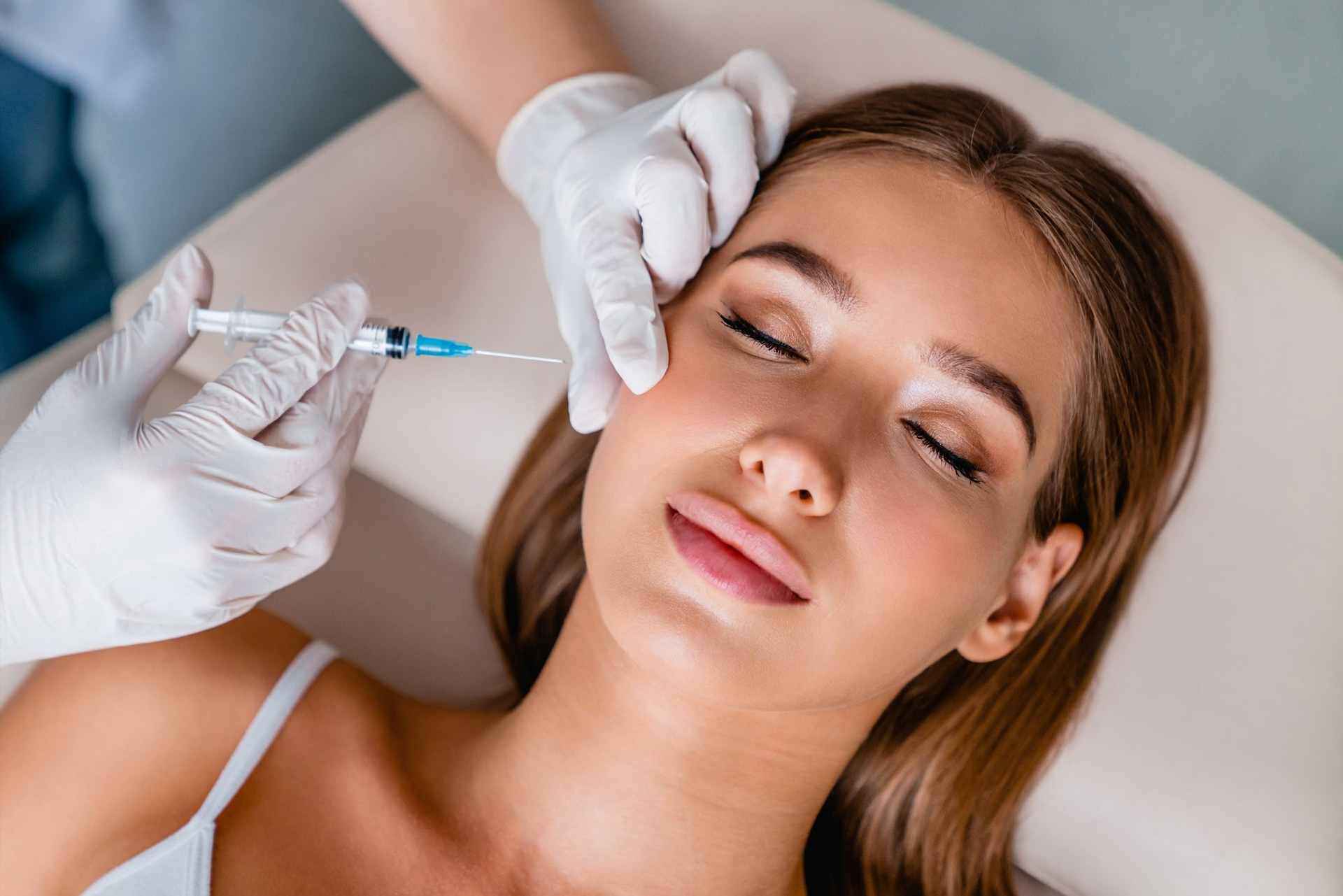
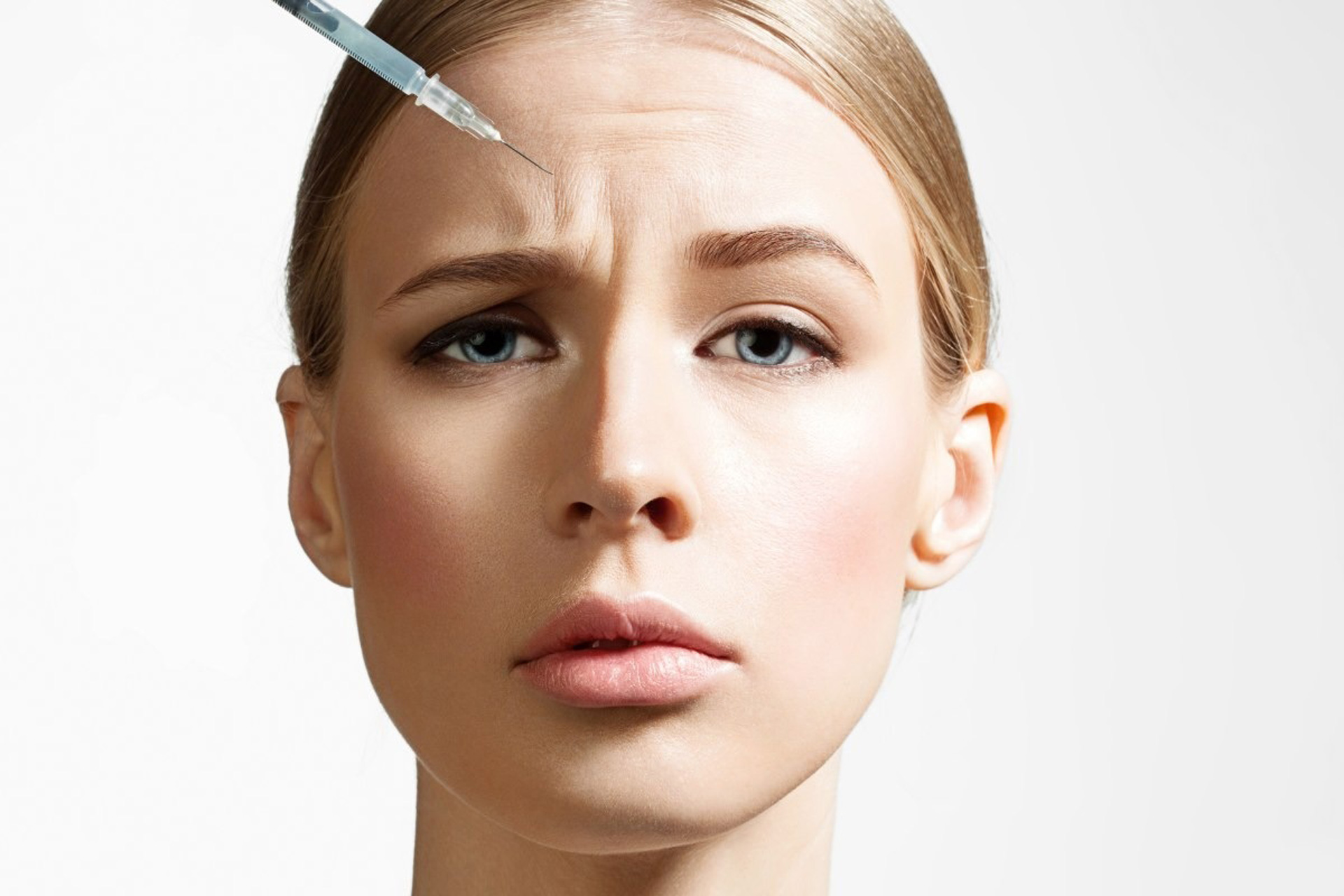
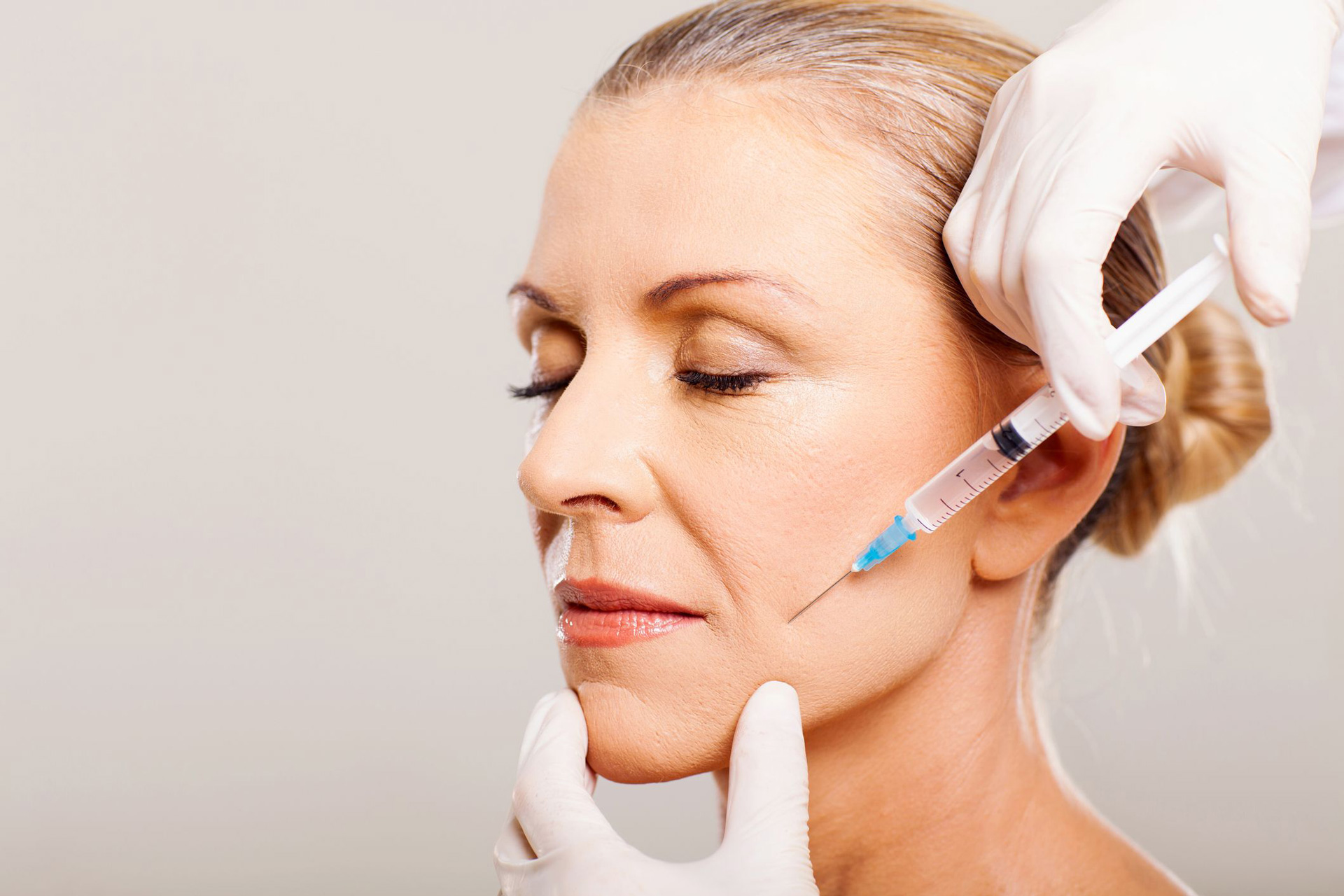
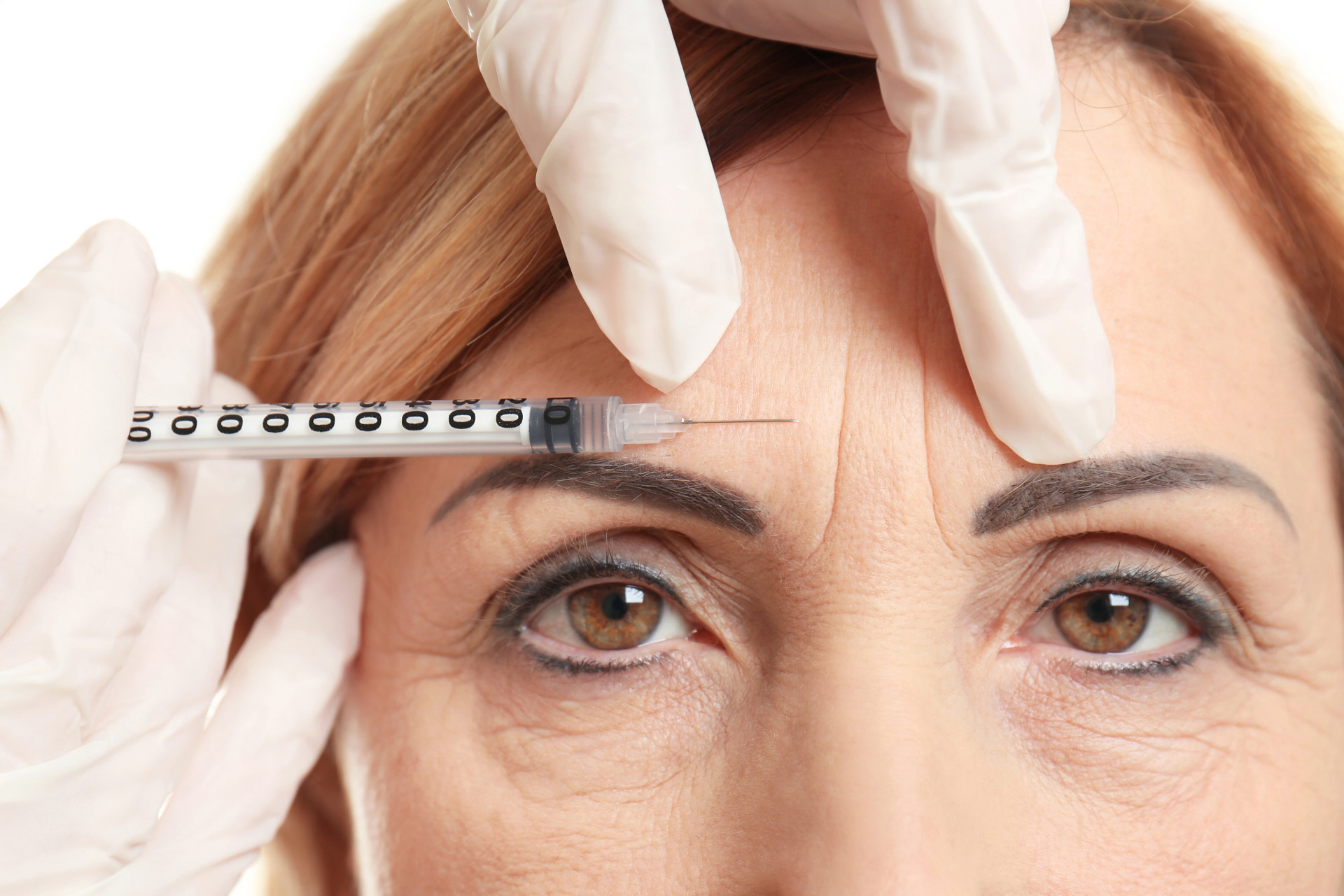
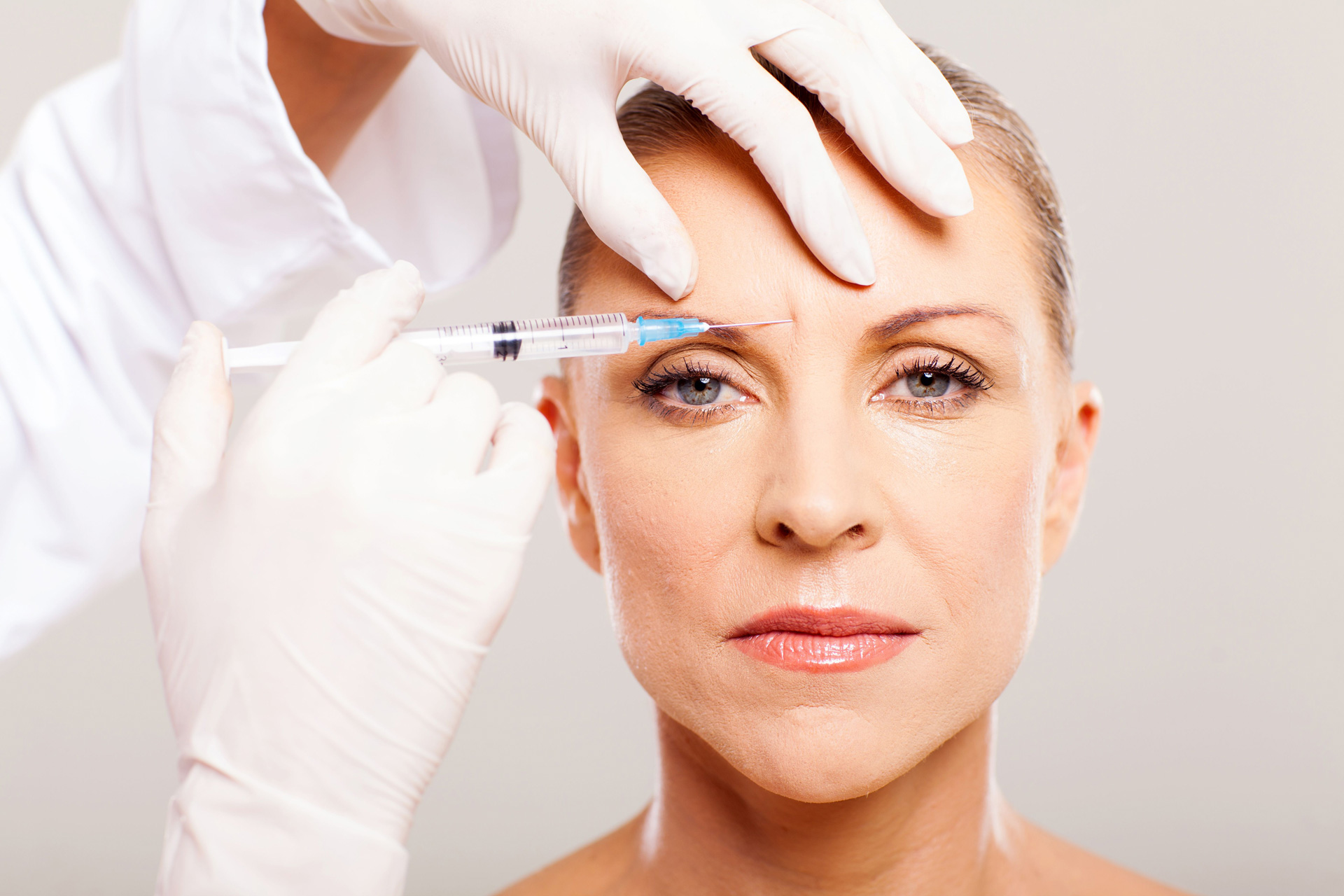
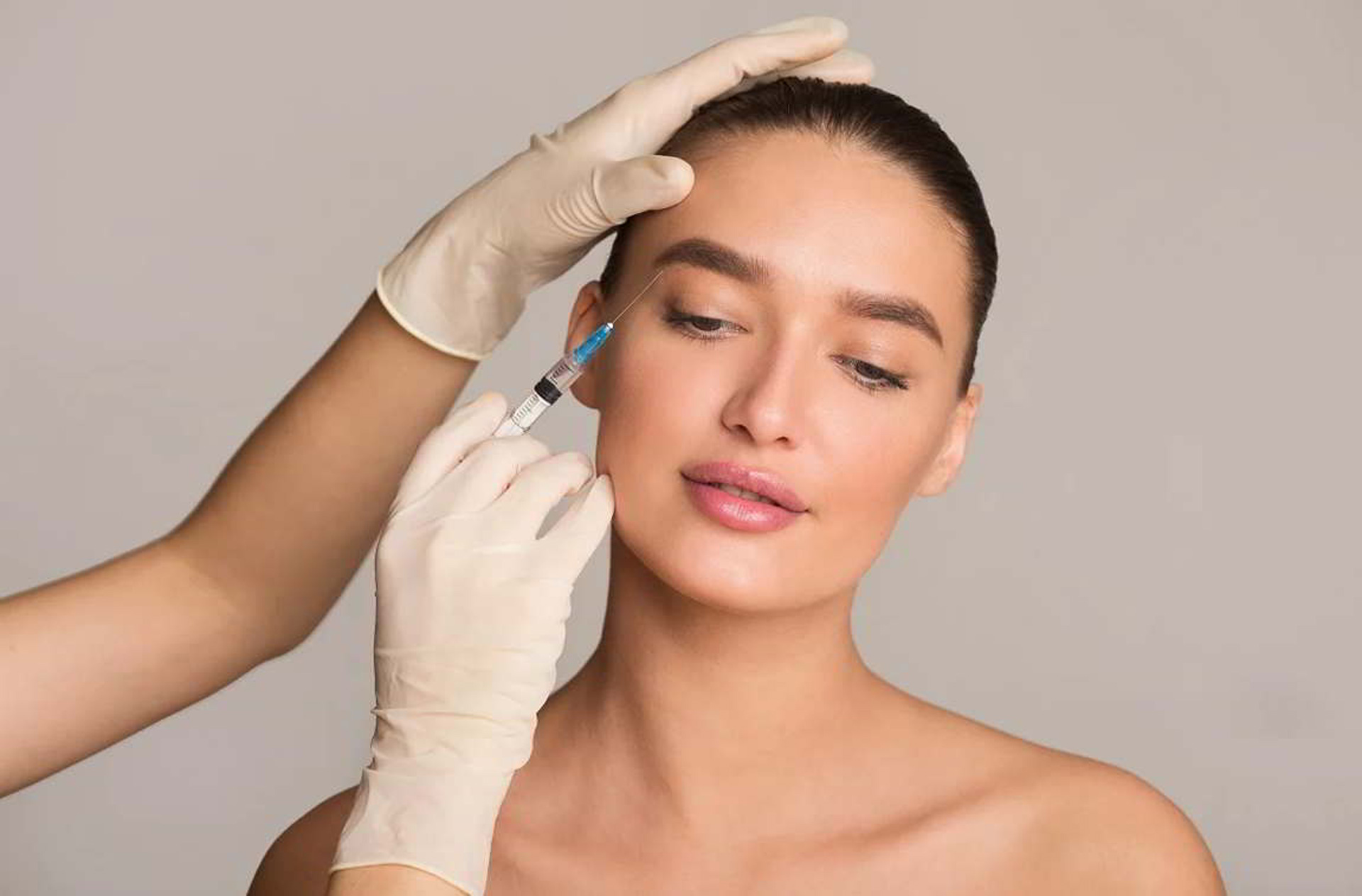
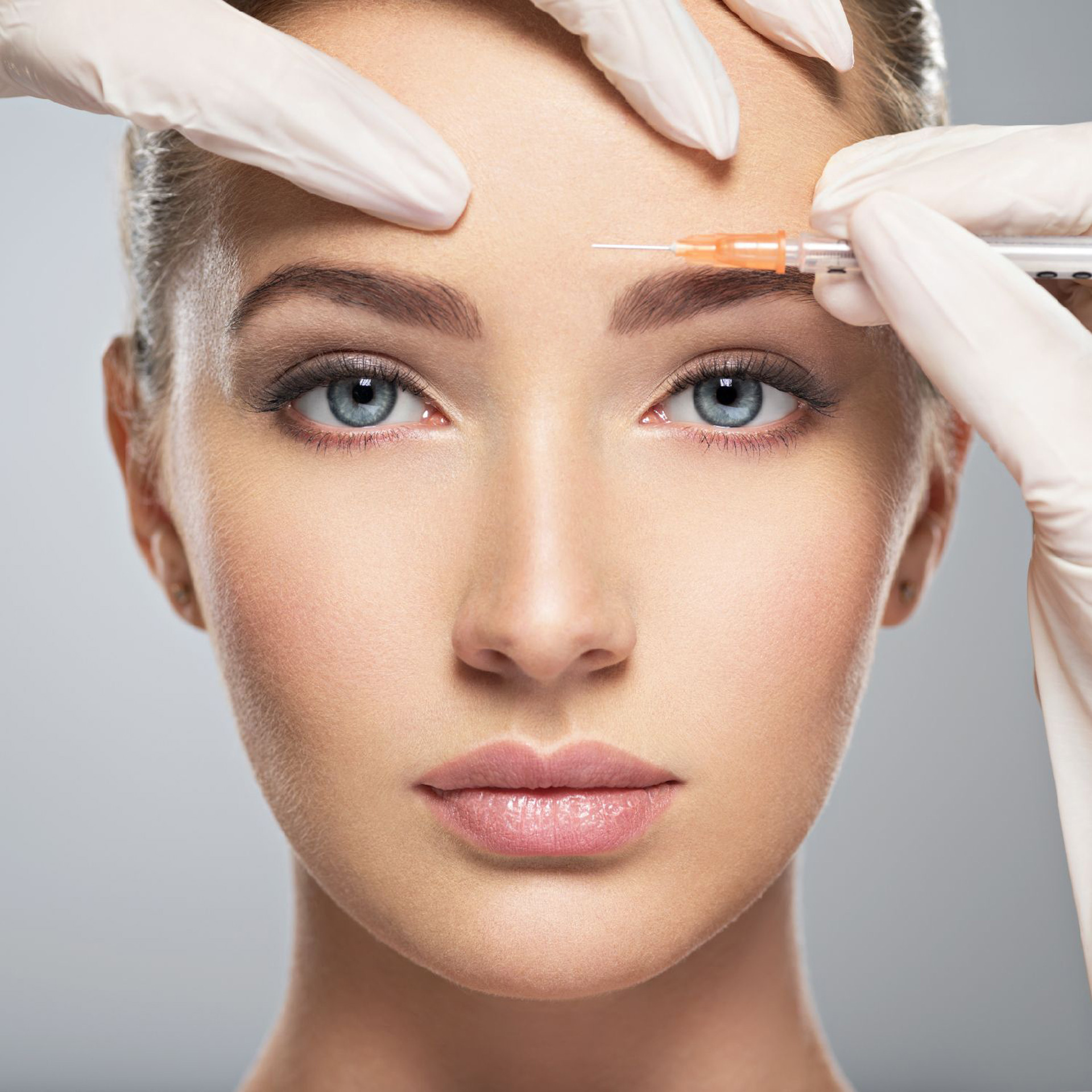
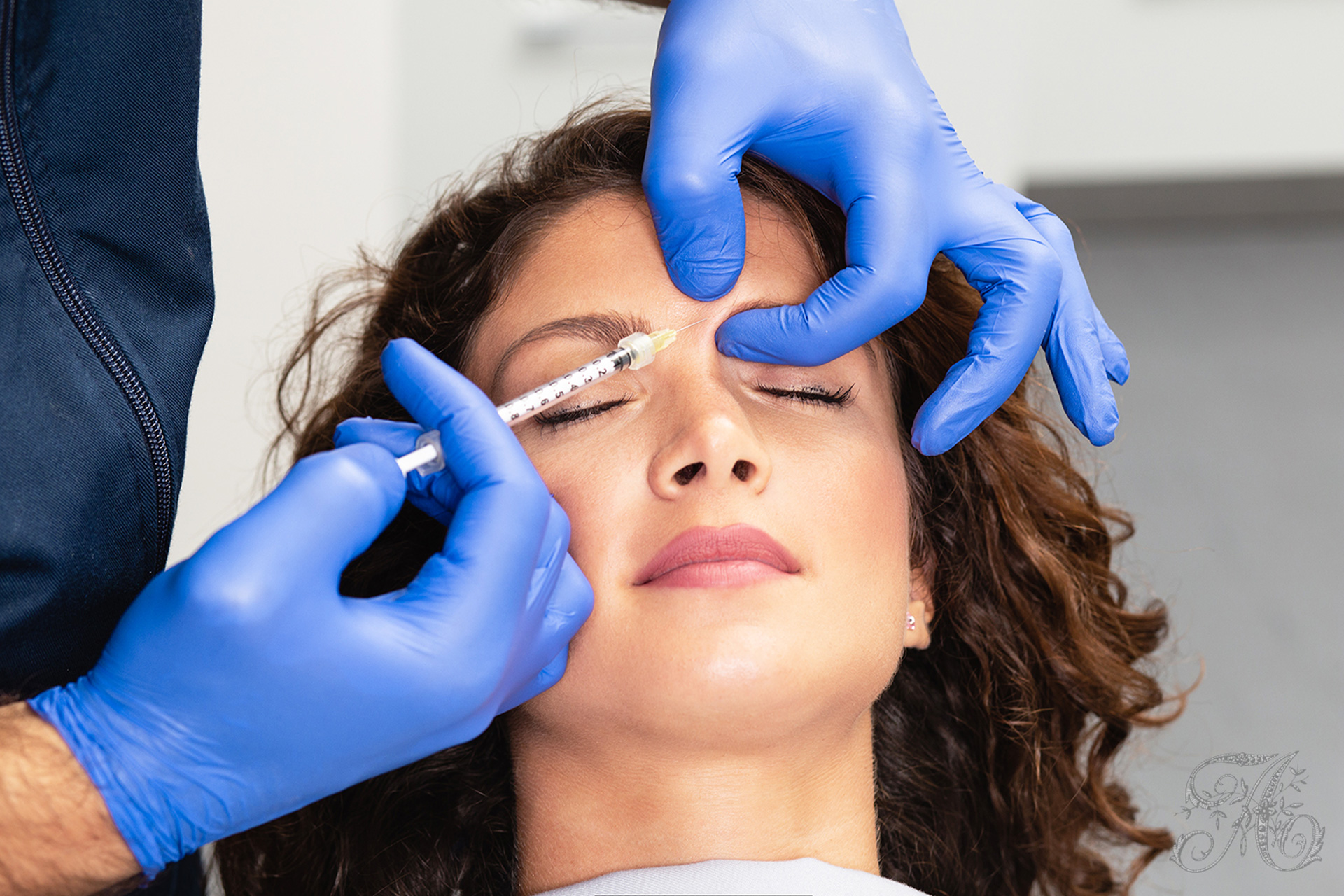
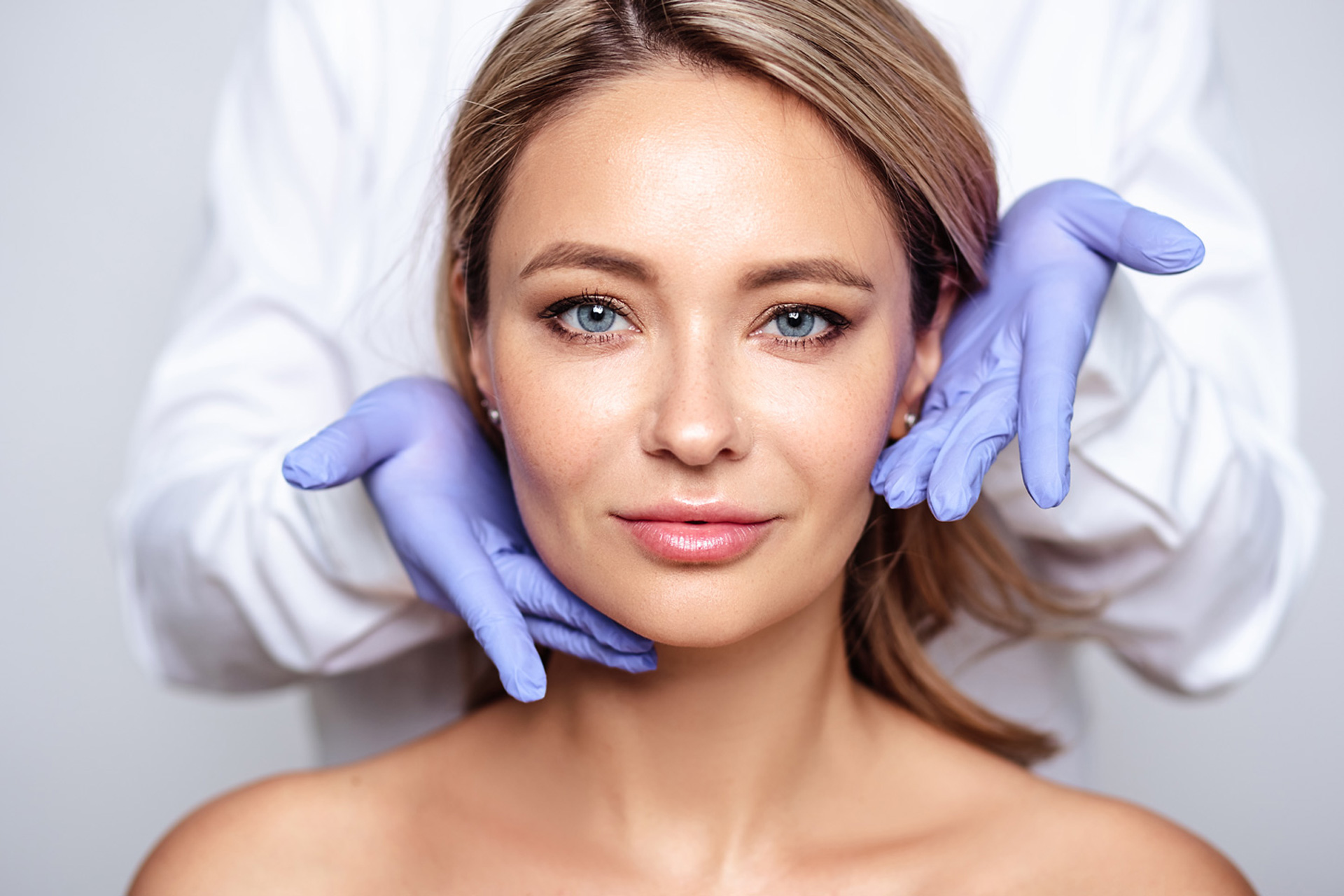
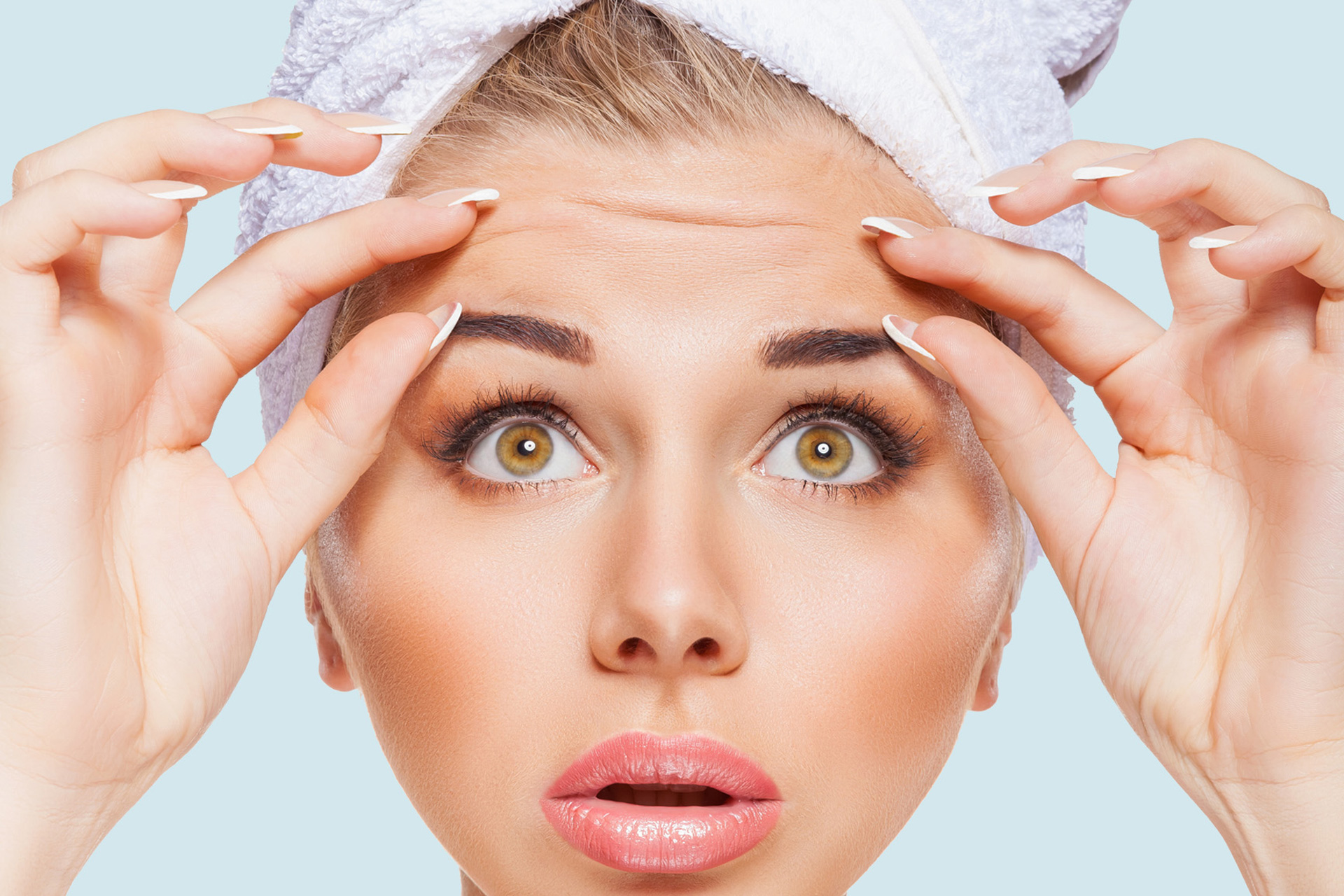
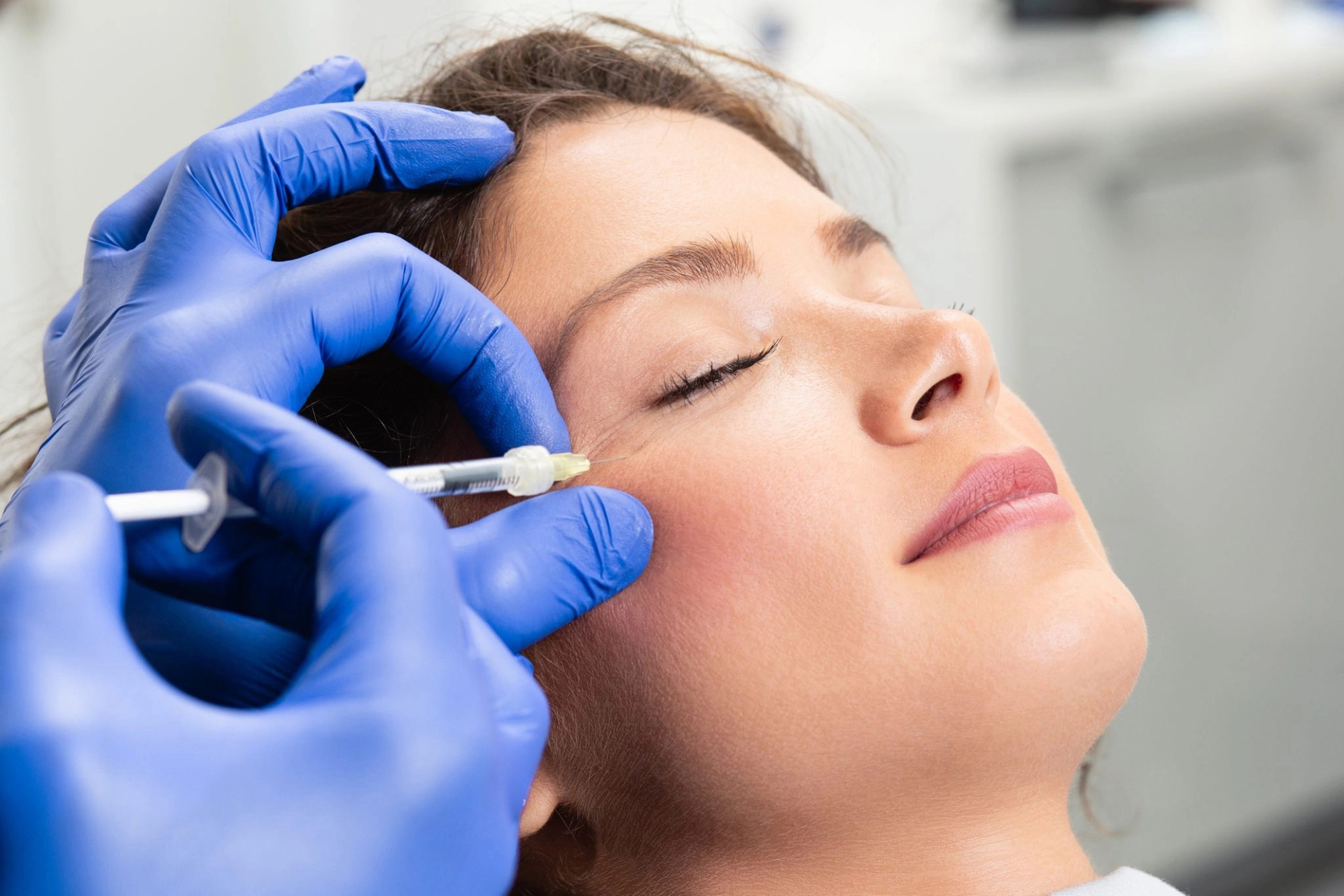

3 Comments